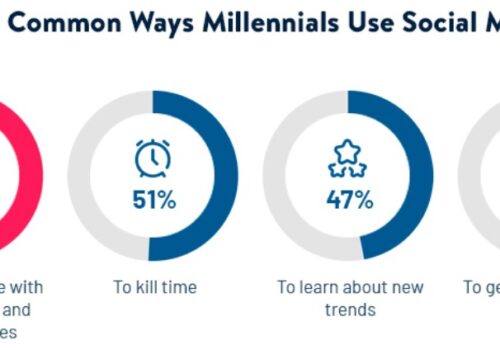Video marketing is a powerful way for businesses to tell their stories and connect with people. It uses videos to promote products, explain ideas, or share stories on the internet.
This method is really popular because many people like watching videos to learn about new things or find products they might want to buy.
Statistics show that video marketing helps businesses get more visitors to their websites, sell more products, and make customers happier.
Let’s discover some impressive Video Marketing Statistics in 2025.
| Statistic | Detail |
|---|---|
| Weekly Video Consumption | People watch 16 hours of online video weekly, up 52% in two years. |
| Social Video Shares | Generates 1200% more shares than text and image content. |
| Message Retention | 95% of a message is retained when watched in a video vs. 10% when read in text. |
| Explainer Videos | 96% have watched to learn more about a product/service. |
| Consumer Demand for Videos | 86% want more videos from brands. |
| Purchase Influence | 64% make a purchase after seeing branded social videos. |
| Live Video Preference | 82% prefer live videos over reading social media updates. |
| Ideal Video Ad Length | 6-10 seconds. |
| E-commerce Influence | Users from user-generated videos are 184% more likely to buy and spend 45% more. |
| SEO Impact | Listings with video thumbnails get 26% more clicks. |
| Future Internet Traffic | 82% of internet traffic will be video content by 2024. |
| Learning Preference | 72% prefer learning about a product/service through video. |
| Brand Content Demand | 54% want to see more video content from brands they support. |
| Global Online Video Reach | Reached 92.3% of internet users globally in Q2 2023. |
| ROI in Marketing | 51% of marketing professionals say video has the highest ROI. |
| Business Adoption | 91% of businesses use video as a marketing tool. |
| Positive ROI from Video Marketing | 87% of video marketers report a favorable ROI. |
| Conversion Increase | Adding a video to a landing page can increase conversions by 18%. |
Some Other Types of Video Content Marketing:
- Vlogs (video blogs)
- Video interviews
- Tutorial videos
- Videos of presentations
- Product demos and reviews
- Video testimonials
- Recordings of live streams
- Video ads
Now, let’s get down to business with the stats on video marketing. To keep your video marketing plan up to date, we’ve concentrated on the most recent figures, which were published within the previous year or so.
The Audience Side of Video Marketing Statistics:
Source: Pexels
- People currently watch 16 hours of online video every week on average, which is up by 52 % in the last two years.
- When compared to text and image content, social video generates 1200% more shares.
- When people see a video, they recall 95% of the message, compared to 10% when they read it in writing.
- In order to learn more about a product or service, 96% of people have watched an explainer video.
- More videos from brands are desired by 86% of people.
- After seeing branded social videos, 64% of consumers make a purchase.
- When it comes to learning about new products or services, consumers prefer videos to articles, infographics, ebooks, and presentations.
- 82% of people would like to watch live videos rather than read social media updates.
- 6-10 seconds of a video ad is considered to be the ideal length.
- Consumers who find their way to an e-commerce site via a user-generated video are 184% more likely to buy and spend 45% more.
- Consumers are more likely to click on a listing when Google displays a video thumbnail next to a search result, which is about 26% of the time.
- 82% of internet traffic will be video content by 2024.
- Viewers retain 95% of a message when they watch it in a video.
- 78% of viewers watch video content every week, and 55% view videos daily.
- 72% of consumers prefer learning about a product or service through video.
- 54% of consumers want to see more video content from brands they support.
- Online videos had an audience reach of 92.3% globally in Q2 2023.
- Individuals spent an average of 17 hours per week on online video consumption in 2023.
Kindly note that this does not imply that blogging or social media updates are no longer relevant. Both of these types of content are critical components of any digital marketing plan, particularly in terms of SEO and reputation management.
The Business Side of Video Marketing Statistics
Source: Pexels
- Video is the content category with the highest return on investment, according to 51% of marketing professionals worldwide.
- Video content is used by 87% of web marketers.
- Explainer videos (72%), presentation videos (49%), testimonial videos (48%), sales videos, and video advertising are the most popular video kinds created by marketers in 2021 (42% each).
- Marketers who use video generate income 49% faster than those who don’t.
- Marketers who include video in their marketing see a 34% increase in conversions.
- Shoppable video is starting to outperform display advertisements in terms of conversion and click-through rates.
- According to 84% of marketers, video has aided them in generating leads.
- According to 87% of video marketers, video has a favorable return on investment.
- 91% of businesses use video as a marketing tool.
- 88% of video marketers view video as an essential part of their strategy.
- 85% of video marketers plan to maintain or increase their video spending in 2024.
- 90% of marketers report video marketing gives them a good ROI.
- 68% of non-users plan to start using video in 2024.
- 66% more qualified leads are generated through video marketing.
- Adding a video to a landing page can increase conversions by 18%.
- 86% of businesses use video as a marketing tool.
Digital video ad spending is predicted to rise 41.9% from 2017 to 2024, according to projections.
The global streaming market rose by 55%. (from 104.11 billion to 161.37 billion).
Statistics on YouTube Video Marketing
Source: Pexels
- Monthly logged-in users on YouTube total over 2.3 billion (which means this number for all users is likely higher).
- For 90% of consumers in the United States, YouTube is their favorite digital video platform.
- Every day, YouTube users watch over 1 billion hours of video.
- Mobile devices account for 70% of YouTube viewing time.
- 90 percent of people use YouTube to find new businesses or items.
- 70% of YouTube viewers have made a purchase as a result of seeing a brand on the platform.
- True Viewads are preferred by 80% of YouTube viewers over in-stream ads.
- YouTube is used by 50.9% of B2B decision-makers to investigate purchases.
- YouTube is used by 62% of businesses to submit videos.
- Only 9% of all small companies in the United States use YouTube.
- On YouTube mobile, 62% of ad time captures viewer attention, compared to 45% of TV ad time.
- YouTube is the most widely used video marketing platform, with 90% of video marketers trusting it.
- India had the largest YouTube audience, with 462 million users.
- 51% of consumers plan to spend more time on YouTube, yet only 35% of marketers plan to use it.
Statistics on Facebook Video Marketing
- In the spring of 2020, Facebook Live viewership climbed by 50%.
- Facebook Watch boasts 140 million daily users who spend an average of 26 minutes each day watching videos on their platform.
- Facebook is used by 84 percent of video marketers as one of their primary video marketing channels.
- Facebook video posts have an average engagement rate of 0.26% (compared to the 0.15% overall engagement rate).
- Facebook video ads are used by more than 73% of marketers to promote their products or services.
- More than 8 billion videos are viewed on Facebook daily.
- Videos that can be watched vertically on mobile devices showed the most engagement on Facebook.
On Facebook, video promotions are now just as popular as image promotions.
When compared to YouTube links, native videos on Facebook have a 10x higher reach.
Video Marketing’s Return on Investment
Is investing in video marketing really worth it?
According to Wyzowl’s research report, the following was discovered:
- According to 89% of video marketers, video provides a solid return on investment.
- According to 83% of video marketers, video aids in lead generation.
- The video has increased traffic to 87% of video marketers’ websites.
- According to 80% of video marketers, video has directly aided in the increase of their sales.
- In 2020, 95% of video marketers intend to raise or maintain their video spending.
- According to Animoto’s Social Video Forecast, 91 percent of marketers are satisfied with the return on investment of video marketing on social media.
The bottom line is that there’s no need to ponder the perks of video marketing for brands. It’s well worth the investment, and you don’t have to take video marketers’ word for it.
Here are two examples of the effectiveness of video marketing. Tiger Fitness claims that video marketing helped them reach a 60% client retention rate, which is three times the industry average. With a video-heavy content marketing strategy, SAP received 9 million impressions.
FAQs
📊 How effective is video marketing?
Video marketing is highly effective, with studies showing that videos can increase conversion rates, boost engagement, and help customers better understand products or services.
🚀 How does video marketing impact sales?
Videos have a strong impact on sales, with many marketers reporting that video helps increase understanding of their product or service, leading to higher conversion rates and sales.
📱 How popular is mobile video consumption?
Mobile video consumption is skyrocketing, with a significant portion of video views now coming from mobile devices, emphasizing the importance of optimizing video content for mobile viewing.
💡 What types of videos are most effective?
Explainer videos, product demos, customer testimonials, and personalized videos are among the most effective types, each serving different purposes in a marketing strategy.
🌐 What role does social media play in video marketing?
Social media platforms are crucial for video marketing, offering wide reach and engagement. Videos on social media tend to receive more shares and interactions compared to other content types.
Quick Links:
- Mobile eCommerce Statistics
- Instagram Statistics
- TikTok Statistics
- Procrastination Stats
- Logo Statistics
Conclusion: Video Marketing Statistics 2025
Video marketing statistics reveal that using videos is a smart move for businesses. Videos help attract more people, explain products clearly, and increase sales.
They are liked by customers all over the world because they are easy to watch and understand. With more people watching videos every day, businesses that use video marketing can stand out and connect better with their audience.
In short, videos are not just popular; they are a powerful way to share your message, making them an essential part of any successful marketing strategy today.
Source: Wordstream, G2.com, Cxl, Designshack.net, Insivia, Outbrain, HubSpot, Statista, Oberlo, Lemonlight








